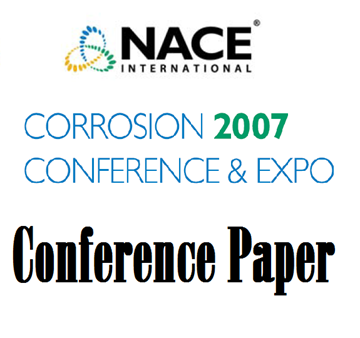Search
96432 Stress Corrosion Cracking of Nickel-Molybdenum Alloys
Also Purchased
02425 STRESS CORROSION CRACKING OF NICKEL-CHROMIUM-MOLYBDENUM ALLOYS IN CHLORIDE SOLUTIONS
Product Number:
51300-02425-SG
ISBN:
02425 2002 CP
$20.00
07421 Fabricating Nickel Alloy Products to Avoid Stress Relaxation Cracking
Product Number:
51300-07421-SG
ISBN:
07421 2007 CP
Publication Date:
2007
$20.00
51318-11600-Material selection and recent case histories with nickel alloys
Product Number:
51318-11600-SG
Publication Date:
2018
$20.00
Recently viewed




